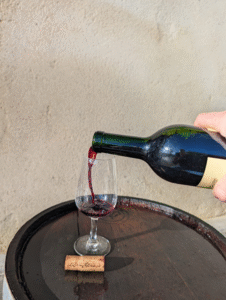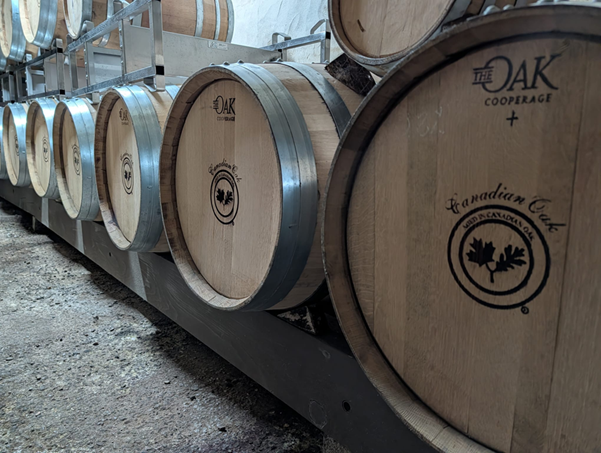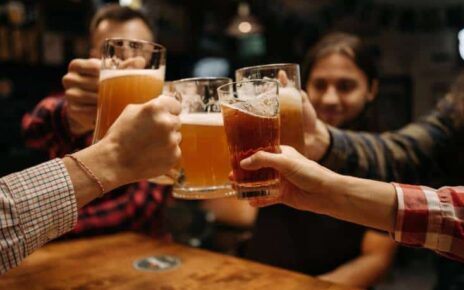For the wine student and the curious sipper alike, the journey beyond a wine’s label is a pursuit of understanding. It’s a quest to decipher the language of terroir, grape, and technique. In this scholarly pursuit, few comparisons are as enlightening as that between the global benchmark, Bordeaux, and its insightful cousin from the Dordogne, the Pecharmant terroir. While they share a genetic code of grape varieties, the wine they produce tells two distinctly different stories. Understanding this divergence is a masterclass in how place defines flavor.
The Foundation: A Shared DNA with a Different Destiny
At its core, this is a tale of two terroirs using the same tools. Both wines are built upon the “Bordeaux Blend,” a symphony of grapes where each plays a specific role.
- Merlot: Provides the core, offering plush fruit, plum, and a fleshy, rounded texture.
- Cabernet Sauvignon: Adds structure, with firm tannins, and notes of blackcurrant (cassis), graphite, and mint.
- Cabernet Franc: Lends aromatic complexity with floral notes of violet, red fruit, and a sometimes peppery spice.
- Malbec (Côt): Contributes deep color, a robust, dark fruit character, and additional tannic backbone.
This shared varietal palette is where the similarities end. The ultimate expression of these grapes is dictated by the land, climate, and philosophy of the winemaker, leading to two profoundly different drinking and learning experiences.
Bordeaux: The Grand, Complex Academic
Bordeaux is a vast region, and its flavor profile is not monolithic but a spectrum. However, its identity is forged by a temperate maritime climate influenced by the Atlantic Ocean and the Gironde estuary, and a diverse mosaic of soils—from the deep gravels of the Left Bank to the clay-limestone of the Right Bank.
The primary aim in Bordeaux is often structure, elegance, and longevity. The wines are academic exercises in balance, where fruit, acid, and tannin are woven together to create a tapestry that unfolds over years, even decades.

Educational Tasting Notes for a Classic Bordeaux Blend (e.g., Left Bank):
Appearance: Deep ruby, often with a garnet rim as it ages.
Nose: A complex bouquet. In youth, expect aromas of blackcurrant (cassis), black cherry, and plum, often framed by cedar, pencil shavings, and a distinct graphite minerality. With age, this evolves into tobacco, leather, forest floor, and savory spices.
Palate: The structure is key. You are met with firm, grippy tannins that provide a dry, mouth-coating sensation. The acidity is pronounced, giving the wine a vertical, linear drive. The flavors echo the nose, with dark fruit leading to those earthy, secondary notes. The finish is long, dry, and contemplative.
Pécharmant: The Concentrated, Earthy Tutor
Nestled just northeast of Bergerac AOC wines, Pécharmant is a small, cohesive appellation with a singular focus on red wine. Its terroir is its defining signature. It features sandy-clay soils over a hard, iron-rich subsoil of “alios.” This impermeable layer stresses the vines, forcing deep root growth and resulting in lower yields and more concentrated fruit. Furthermore, its climate is slightly warmer and drier than Bordeaux’s, with more continental influences.
The result is a wine that feels more immediately primal and earth-driven. Where Bordeaux is often about finesse and frame, Pécharmant is about depth and substance.
Educational Tasting Notes for a Classic Pécharmant:
Appearance: Often an opaque, deep garnet or purple core, signaling its density.
Nose: The fruit profile is darker and more brooding. Think black plum, stewed blackberry, and blueberry rather than fresh cassis. This is almost always accompanied by a distinct earthy, truffle-like note, along with dark chocolate, violets, and warm stones. The oak influence is often subtle, integrated into the wine’s robust character.
Palate: The texture is what sets it apart. The tannins are abundant but often riper and silkier than a young Bordeaux, providing a plush, dense mouthfeel rather than a grippy one. The wine is full-bodied and generous, with its dark fruit and earthy flavors coating the palate. The finish is long, warm, and mineral-driven.
Side-by-Side: A Comparative Tasting Table
To truly grasp the differences, there is no better tool than a comparative tasting. Place a mid-tier Bordeaux Supérieur or a good Cru Bourgeois next to a representative Pécharmant.
| Characteristic | Bordeaux (Left Bank Style) | Pécharmant |
| Primary Fruit | Blackcurrant, Red Cherry, Plum | Black Plum, Blackberry, Blueberry |
| Secondary Notes | Cedar, Pencil Shavings, Graphite | Truffle, Dark Chocolate, Violets, Wet Stone |
| Tannin Profile | Firm, Grippy, Architectural | Rounded, Silky, Plush |
| Acidity | Pronounced and Upright | Balanced and Integrated |
| Body & Texture | Medium to Full-Bodied, Linear | Inherently Full-Bodied, Dense |
| Terroir Translation | Elegance, Structure, Restraint | Concentration, Earthiness, Generosity |
| Metaphor | A tailored Savile Row suit: precise, structured, and built to last. | A hand-stitched leather armchair: comfortable, rich, and deeply inviting. |
The Educational Takeaway: Why This Comparison Matters
For anyone seeking to deepen their wine knowledge, this specific comparison is invaluable for several reasons:
1. It Isolates Terroir:
You are tasting the same grapes. When you note the cassis of Bordeaux versus the plum of Pécharmant, or the graphite versus the truffle, you are not noting grape variety; you are directly tasting the influence of gravel versus iron-rich clay, of a maritime climate versus a continental one.
2. It Clarifies Tannin Structure:
Tasting the grippy, architectural tannins of a young Bordeaux against the plush, silky tannins of a Pécharmant is a masterclass in how tannin quality varies. It moves the concept from abstract to tangible.
3. It Demystifies “Old World” Wine:
The Old World is not a monolith of similar flavors. This comparison shows the incredible diversity within a single country and even between neighboring regions, teaching the taster to look beyond the country of origin and into the specifics of the appellation.
In the end, the rivalry between Pécharmant and Bordeaux on the palate is not about which is better. It is about education. Bordeaux teaches the lesson of structure, balance, and age-worthiness. Pécharmant teaches the lesson of terroir expression, textural depth, and earthy complexity. To taste them side-by-side is to take a graduate-level course in the language of wine, one that leaves the scholar not with a definitive answer, but with a far more rewarding gift: a deeper, more nuanced set of questions.





